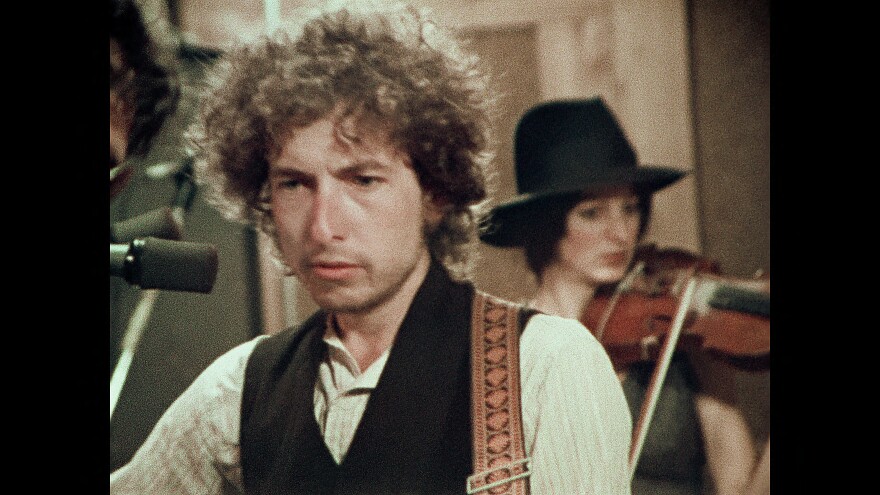Martin Scorsese’s reputation tends to fix on his creepy, violent stuff. Taxi Driver, Raging Bull, Shutter Island. Or the great crime films like Goodfellas. But Scorsese reaches wider than that, and some of his best work comes through music films. The Last Waltz about the group The Band; a series called The Blues that he produced for public television, No Direction Home, his first film about Bob Dylan, Shine a Light with The Rolling Stones, the beautiful George Harrison: Living in the Material World, and now for Netflix another expansive picture about Bob Dylan called Rolling Thunder Revue: A Bob Dylan Story by Martin Scorsese.
The Rolling Thunder Revue itself was a concert tour Dylan led in 1975 and 1976. The idea was to play in smaller halls than usual to bring music to people who couldn’t get to the big venue concerts. The group travelled by RV, often with Dylan at the wheel: Joan Baez was part of it, Roger McGuinn, Joni Mitchell, folksinger Ramblin’ Jack Elliott , the poet Allen Ginsburg, and the violinist Scarlet Rivera. Financially, it was a disaster, but it must have been a wonderful show for audiences.
Good filmmakers see Bob Dylan as an elusive guy. In 2007, Todd Haynes used six different actors to play Dylan in I’m Not There. Scorsese opens Rolling Thunder on an 1896 film by the French filmmaking pioneer and magician Georges Méliès making a woman vanish and then reappear – so obviously Scorsese is taking the audience into trickery. That the movie is called A Bob Dylan Story by Martin Scorsese is another hint that there is fiction in this picture. The congressman interviewed in the film is Michael Murphy playing his character Jack Tanner from a Robert Altman movie. The full-of- baloney documentary filmmaker is another character Scorsese conjures up for this story. And in the first shots of Dylan himself, which are genuine images from the Rolling Thunder tour, Dylan wears heavy white makeup with black around his eyes, like vaudeville performers in the early 1900s and silent film comics.

But fiction used honestly carves a road into truth and actuality, and this film, in its indirect, fanciful, brilliant, unruly way fashions a thrilling picture of America and some of our best music in the mid-1970s.
You might not be surprised that Bob Dylan is a far better artist than he is a talker. Mundane actuality may not be his strength. It’s astonishing that he sits for an interview at all – although Martin Scorsese can probably interview almost anyone on the planet. But Dylan is elusive and vague. He fidgets and says that he has little to say about this tour that took place 40 years ago.
But the very first shots of Dylan in the film knock you for a loop. It’s 1975. He’s on stage, shown in a tight profile from his left; he wears a pale gray round-brimmed hat with fresh flowers in it, and with his mouth against the mic he sings “Mr Tambourine Man.” Your mind may need time to take in the lyrics, but your gut finds no confusion in Dylan’s poetry.
If you’ve only seen Dylan in recent tours, you might not know he was once electrifying. When he sings the long, intricate story in “Isis,” his fierce eyes dart around – his furious concentration and sheer physicality grab you like few other performers can. The footage is by two of the great concert cinematographers of the time, Howard Alk and David Myer, who found the visual core of Dylan on stage. And now, in 2019, Scorsese takes that immediacy and puts it in a context with interviews with the actual Allen Ginsburg, playwright Sam Shepard, actress Sharon Stone, whose story is not true, and clips of Richard Nixon, Jimmy Carter, and other music groups that give both history and the unrelenting presentness of Bob Dylan. Rolling Thunder shows Dylan then, and Scorsese now at the tops of their games.






